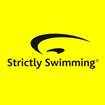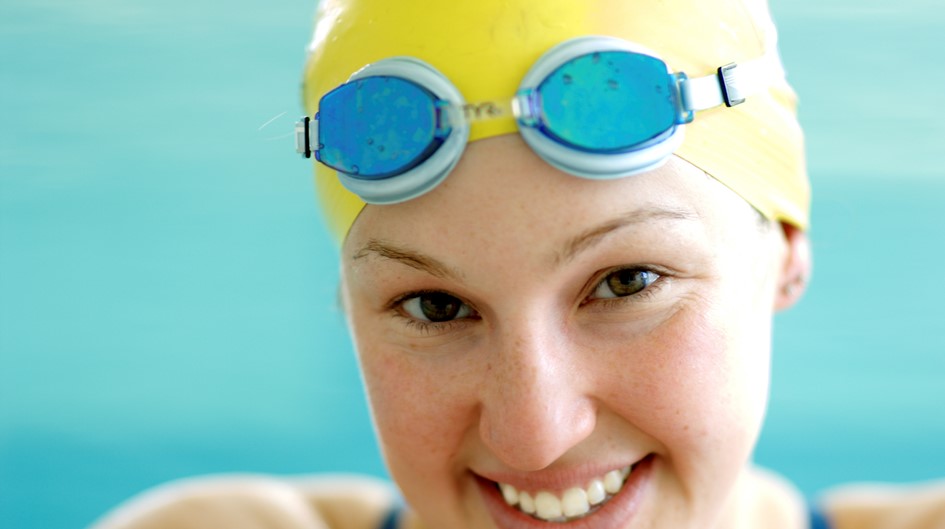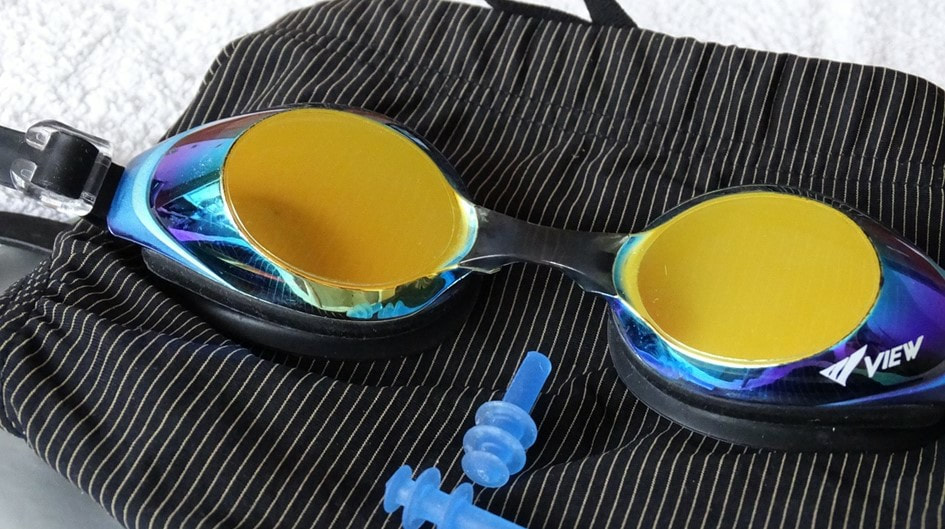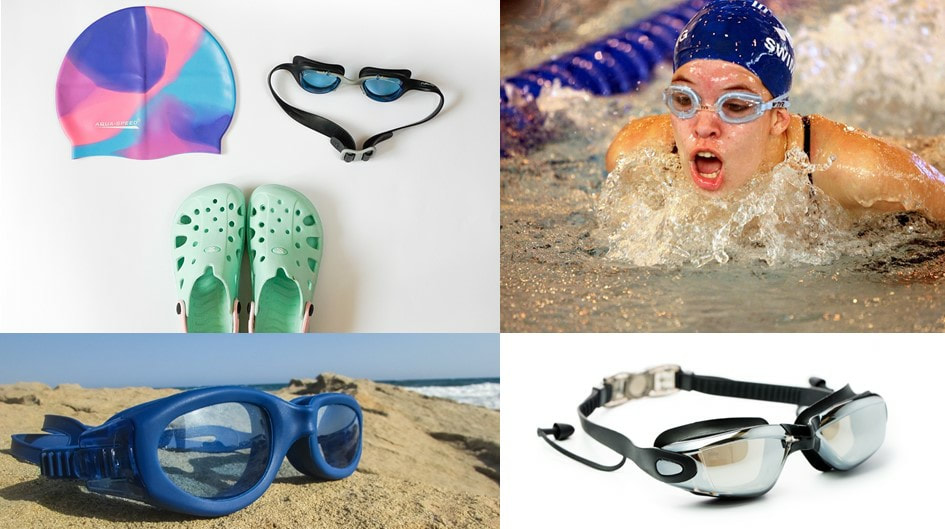|
There are so many brands of swimming goggles on the market nowadays, with a varying price range, but the best goggles are simply those that fit correctly and feel comfortable and stable on your face. You need to feel happy and confident that they will stay in place when swimming at your top speed. Many of the Strictly Swimming London coaching team have a high-level competitive swimming background and all will tell you how they had a favourite pair of goggles or ‘lucky goggles’ they felt helped them when racing (many of these goggles being the lowest price). So despite the price of the goggles you are trying on, always opt for those that fit the best and make your feel confident that they won’t bug you during your lessons, workouts and races. Getting the best fit with your swimming goggles Try on a few pair of swimming goggles to find a fit that suits you best. For some, children’s goggles may fit better than adult goggles. Hold the goggles to your face (without using the strap) and if you feel suction and they stay in place briefly, then they are most likely to be a good fit as you can feel a tight seal. If they fall off immediately, they won’t be a good fit and will hinder your swimming lessons and workouts. The main areas to check out when trying on a new pair of goggles are: Eye seal – After trying various pairs, opt for goggles that fit your eye socket size. With a good fitting pair of swimming goggles, you should feel even pressure around the eye sockets and seals the eyes well. Look at all eye socket types for men, women, all adults and even children’s goggles. Straps - The straps are used to keep your goggles in place but not to provide the seal. The strap should not be tightened so much that it makes the goggle uncomfortable and creates marks around your eyes, because it is too tight. When wearing a goggle with two straps, place the lower strap about eye level at the back of your head and position the other strap a couple of inches higher. This provides a secure fit and will help to prevent your goggles leaking or falling off when you dive into the water. Nose bridge – many goggles nowadays have an adjustable nose bridge to allow swimmers to personalise the fit and mould it to fit your face. Find a pair of goggles with a nose bridge that can be tightened or loosened to fit the with of your nose (without it affecting the placement of each goggle on your eye sockets). Pool Swimming or Open Water Swimming? If you are swimming in the sea or in open water, it is recommended that you opt for polarized swimming goggles. It is also important to find a pair of goggles which allow optimum peripheral vision when swimming in open water due to reduced visibility in unclear water. A wide medium to large frame will maximize your field of view in the open water, allowing you to ‘sight’ better when swimming in rough water. Swimming Goggles for Triathlon Whether you are contending with the glare of the sun, murky water or cloudy skies, it is worth spending some time thinking about your needs before you buy some goggles for your triathlon swim leg. Adult triathletes who opt for a full open-water mask will experience greater drag than a pair of small racing goggles. That may be true, but a small pair of goggles wouldn’t stand up well to a kick in the face at the start of a triathlon. A full wrap-around goggle is a common choice for open-water swimmers and triathletes, and there are definite benefits associated with the greater peripheral vision and more even distribution of pressure around the eyes through long swims. Goggles Keep Steaming Up Goggles fog up because warm, wet air, usually created from your body heat, condenses on the cooler-than-air lenses. However, if your goggles feature an anti-fog coating and still steam up, it could be their age. In some cases, with regular usage, goggles can out-live their anti-fog coating, depending on the method used to apply it during manufacture. If yours are fogging up and are old or well-used, it might be time to consider investing in a new pair. Avoid rubbing the lenses or touching them during your lessons and workouts, as this will start to remove the coating. Taking Care of Your Goggles Goggle maintenance is not an exact science but by following our hints and tips you should prolong the life of your goggles. All you need to do is wash the chlorinated water off your goggles after your lesson in warm water, air dry them rather than wiping them with a towel and store them carefully to avoid scratching the lenses. No matter what swimming level you fall into, it is essential to find the correct swimming goggles for your lessons and training routines. It is essential in order to give you comfort and maximise visibility and quite simply prevent unwanted chlorinated water in your eyes. There is nothing more distracting than an unsuitable and uncomfortable pair of goggles during your lessons. Finding the right fit can be a problem to many swimmers and can slow down progression during your lessons. For example, Strictly Swimming London coaches often experience clients struggling and being hesitant with their breathing technique simply due to wrongly fitted goggles. Water getting into clients’ eyes when swimming often hinders concentration during lessons. Wearing the perfect goggles during your lesson will ensure excellent vision, comfort and concentration. Here is a simple guide to help you select a pair of swimming goggles depending on your needs. Factors to consider when choosing goggles Face shape – your swimming goggles should fit snugly on your face and eye sockets. This includes matching the width of your goggles with the width of your face. Some competitive swimmers wear smaller racing goggles or children’s goggles for a firm fit. Men and women have different contours of the face, hence why many brands sell both men’s and women’s swimming goggles. Size and Shape – Goggles come in all shapes and sizes. They generally can be classified into small and large sockets, small and large frame size and small and large lenses. Large socket goggles don’t actually fit into your eye socket and rely on suction around the eye instead. Lens size is the size of the lens through which the swimmer sees. A larger lens allows the swimmer to see more with a wide-angle view during lessons. By contrast, small lenses are more streamlined but allow the swimmer a smaller field of vision. Comfort – Select a pair that you can imagine wearing for hours a week without any discomfort. If you are swimming for reasonably long periods of time, comfort will be your main priority. Swim training and fitness swimming will involve swimming many lengths in one session and you should therefore choose a goggle that feels comfortable around the eyes. Even a one-hour swimming lesson or a one and half hour Iron-man swim requires comfortable goggles. Visibility - A flat lens will typically reduce your perception of depth and distance, whereas a curved lens increases peripheral vision in the water and provide a 180 degree range of vision. Some goggles even have slanted lenses to promote correct head position and body alignment. Visibility is essential in both the pool and open water and your choice of eye wear should provide this. Choose goggles with an anti-fog coating and UV protection. Coated lenses are better because you won’t need to defog them as often. Colour of the lens – Many swimmers tend to go for lighter coloured lenses for visibility, but if you regularly swim outdoors or in bright environments, dark lenses can be better in coping with the glare of the sun. Clear lenses are designed for indoor pool swimming with low light. Dark lenses such as mirrored lenses or smoky lenses are designed for sunny outdoor swimming to reduce brightness (just as your sunglasses work). Blue lenses are suited to both indoor and outdoor use and are designed to allow a moderate level of light into the eye but maintain protection from glare in bright conditions. Lilac lenses provide the best contrast for objects against a green or blue background. Amber lenses are designed to filter the light to crisp up your view. Anti-Fog Lens – Regular untreated lenses tend to easily mist up when used in the swimming pool. Anti-Fog treated goggles on the inside surface of the lenses help to reduce fogging up while you are in the water. Many brands now come with anti-fog protection. Avoid touching or wiping the inside of the lens as this can damage the anti-fog coating which cannot be repaired. Types of Swimming Goggles
Training Goggles – Many swimmers have a separate pair of goggles for training and lessons than they use for racing, open water events or triathlons. This pair is usually more comfortable whilst you practice with your Strictly Swimming London coaches. Racing – These goggles are designed to be streamlined with smaller eye frames to minimise drag in the water. They also provide a secure fit for dives and turns. They may not be as comfortable as fitness or leisure goggles. Masks - If you’re new to open-water swimming and feel vulnerable without lane ropes and markers, a mask, rather than goggles, could be the way to go in order to get the best field of vision possible. They are bigger in size than a traditional swimming goggle but smaller than a snorkel/diving mask. They are very comfortable and offer a very good seal. Many swimmers opt for a mask for their triathlon. You are welcome to try your mask during your lessons. Prescription – Swimming goggles with prescription lenses can be ordered for people who wear glasses with their specific lens strength. These goggles can be a huge help for people with poor eyesight during lessons. Please talk to our Strictly Swimming London coaches about this and we can advise you. Polarized - offer the best glare protection and are designed for high-level light and sunny conditions. Ideal for open water swimming, triathlons and bright indoor pools. Polarized lenses increase the contrast in your vision that you can lose with tinted lenses. Your Strictly Swimming London coach will happily advise you on any of the above and feel free to contact us to discuss this. Coming soon… Part Two on Choosing the Right Goggles… including how to get the best fit for your different goggles and also best goggles for triathlon. |
AUTHORPaul started competing in swimming from the age of 8 and eventually went on to represent his country all over the world. During his time at University, Paul specialised in Aquatics and the Biomechanics of Swimming and produced numerous theses on swimming performance. TOPICS
All
ARCHIVES
June 2024
|
Let's connect!
Copyright © 2024 Strictly Swimming




